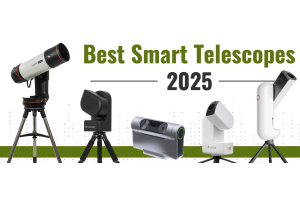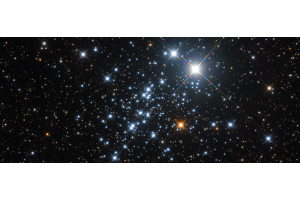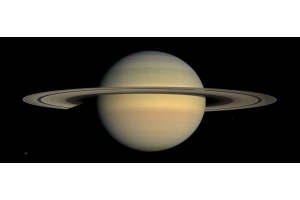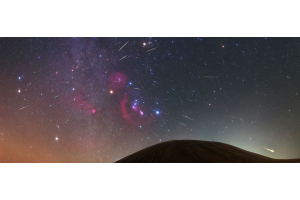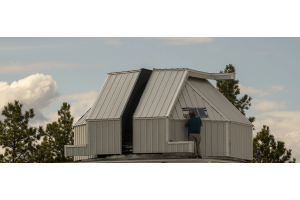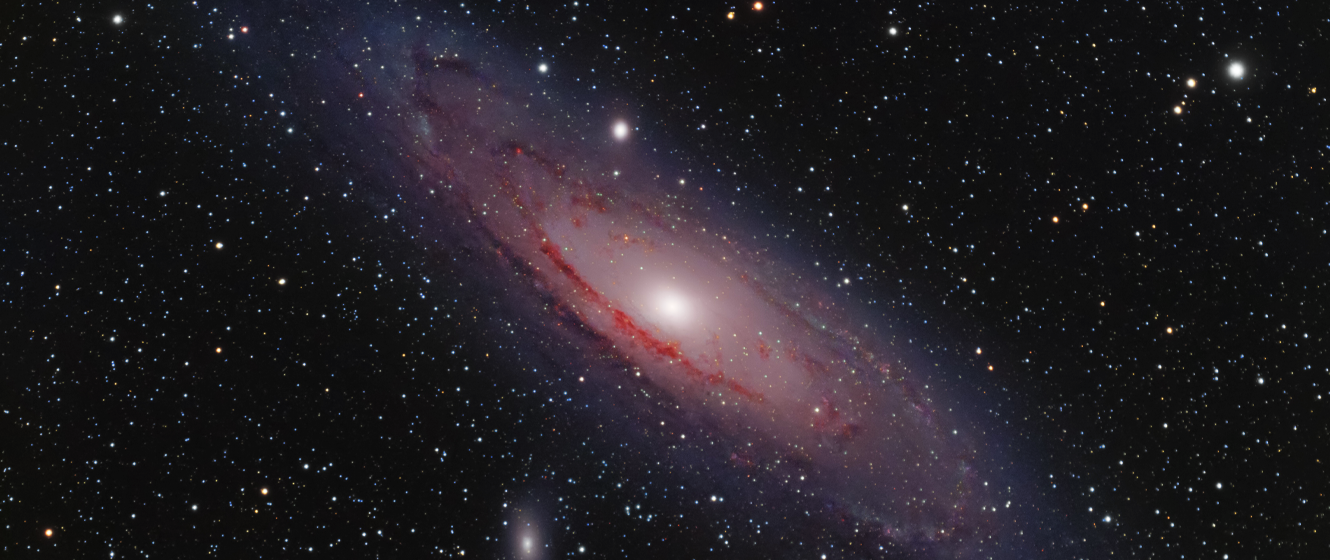
Here’s a question that gets asked a lot in astronomy, especially when it comes to telescopes: what’s the most distant object you can see? Maybe you’re thinking of buying a telescope, or maybe you already own one, and you’ve had a friend or neighbor ask you.
It’s not an easy question to answer. For starters, estimates of distances will vary, and, of course, there are thousands of galaxies visible with a telescope. Finding the most distant one is, therefore, difficult, to say the least.
Another factor to consider is brightness: two galaxies might have the same magnitude (brightness), but if one appears larger in the sky, then that light is scattered over a larger area, making the galaxy harder to see. That could push the galaxy beyond the capabilities of the telescope in question.
Just to complicate matters even further, while a telescope will have a limit in terms of the faintest object it can see, it’s a theoretical limit, as the reality will depend upon the quality of the equipment, the sky conditions, and your own eyesight. Therefore, finding the most distant object, visible with the equipment you have, is no easy task! That said, we can still come up with some realistic distances based on targets known to be observable. In this case, we can use software to find potential targets and then verify that those targets are, indeed, observable with the equipment at hand.
For reference, the following books were used to verify the observability of the targets:
- Viewing the Constellations with Binoculars - Bojan Kambič (Springer, ISBN 978-0-387-85354-3)
- Cosmic Challenge - Philip S. Harrington (Cambridge, ISBN 978-0-521-89936-9)
- The Night Sky Observer’s Guide (Vols 1 & 2) - George Robert Kepple & Glen W. Sanner (Willmann-Bell, ISBNs 0-943396-58-1 and 0-943396-60-3, respectively)
How Far Can You See With the Naked Eye?
Perhaps more than anything else, how far you can see will greatly depend upon your location and the quality of your sky. For example, if you live in or near a city center, you may only be able to see a handful of the brightest stars, and even the brightest star clusters, nebulae, and galaxies may be difficult or simply impossible to see, even with equipment.
You can, however, see Deneb, the brightest star in the summer constellation of Cygnus, the Swan. Estimates of its distance vary greatly, with some placing it as far as 7,000 light-years away, but more conservative estimates place it at less than half that distance - roughly 2,600 light-years away.
Half of the brighter naked-eye stars are less than 100 light-years away, which means Deneb must be one of the most luminous stars easily seen in the sky; in fact, astronomers estimate its luminosity to be roughly equivalent to 55,000 Suns.
Moving away from the inner city and into the suburbs, the sky begins to darken a little, and we get to see more stars, a few deep sky objects, and, consequently, a little further afield.
For example, if you’re in the southern hemisphere, you may be able to spot the Small Magellanic Cloud with just your eyes. A satellite dwarf galaxy of our own Milky Way, it lies at an impressive distance of 200,000 light-years. In other words, you’re seeing it as it was when homo sapiens first appeared in Africa.
Glowing at around magnitude 2, the southern hemisphere also boasts the Eta Carinae Nebula, roughly 10,000 light-years away, while for those of us in the northern hemisphere, you can see Messier 42, the Great Orion Nebula, from your backyard in the suburbs. Granted, shining at a dimmer magnitude of 4.0, it only appears as a very faint, misty star-like point, but it’s there nonetheless.
The nebula lies roughly 1,400 light-years away, which, of course, means you’re seeing it as it was around 600 CE, not long after the collapse of the Western Roman Empire.
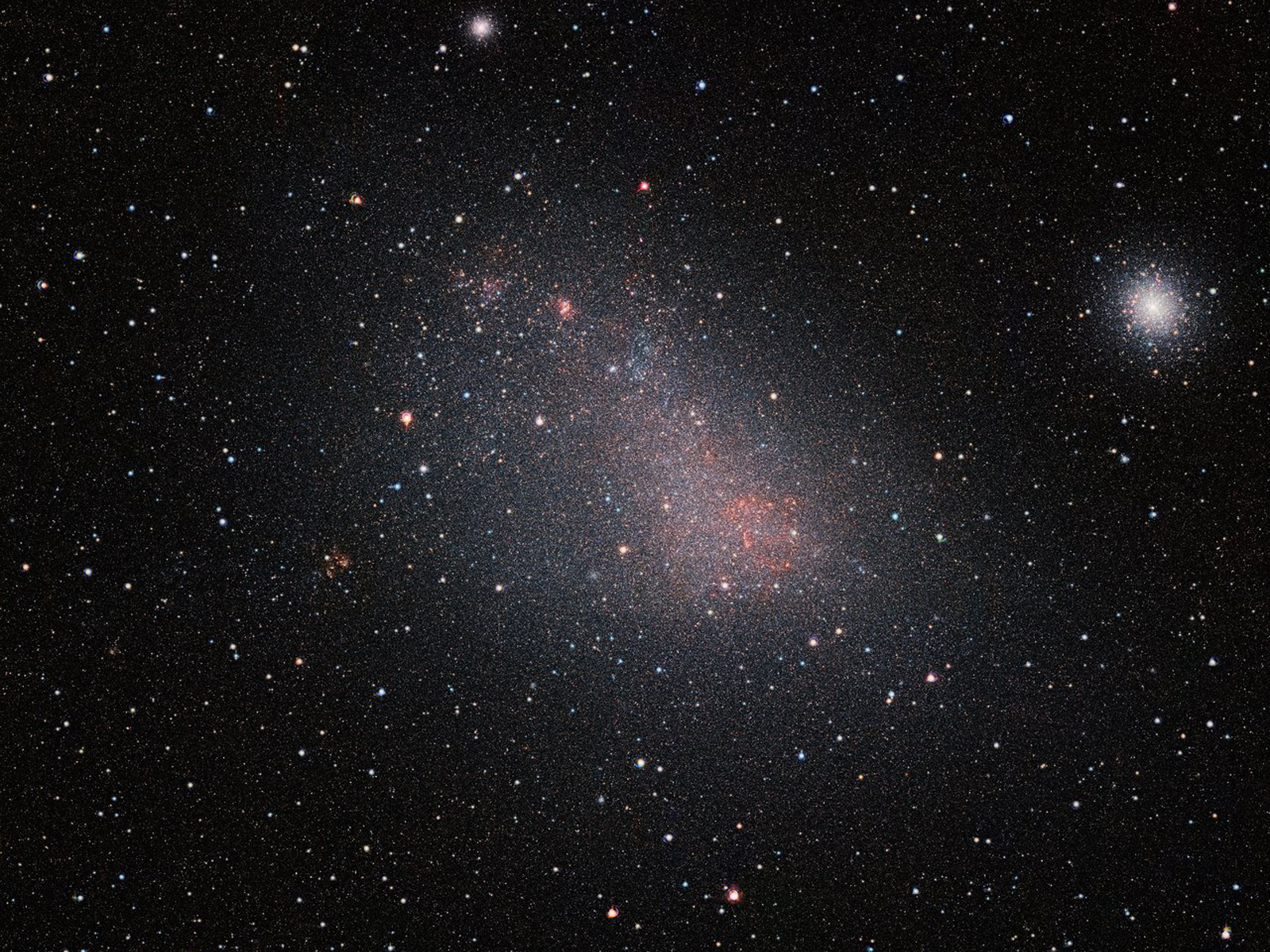
Image Credit: ESO/VISTA VMC
If you’re under truly dark skies and south of the equator, you may be able to spot NGC 2070, the Tarantula Nebula. At magnitude 5, it’s on the edge of naked eye visibility, but if you want to try your luck, you’ll find it in the Large Magellanic Cloud, roughly 170,000 light-years away.
Dark sky observers north of the equator should also be able to see Messier 31, the Andromeda Galaxy. At a distance of 2.6 million light-years, this is often regarded as the most distant object easily seen with the naked eye, but there are a few other objects worth noting.
For starters, if you have good eyesight, you might also be able to see Messier 33, the Triangulum Galaxy. Like Andromeda, it’s one of the closest to our own Milky Way, but at a distance of roughly 2.9 million light-years, it’s a little further away. (Some may even be able to see fainter galaxies. For example, Messier 81, Bode’s Galaxy, is roughly 12 million light-years away, but your chances of success are slim, to say the least!)
Honorable mentions must also go to the following (albeit closer) deep sky objects:
- The Double Cluster (NGC 869 & NGC 884). This pair can be seen as a faint, misty patch between Cassiopeia and Perseus. Of the two, NGC 869 is roughly 6,800 light-years away, while NGC 884 is an impressive 8,600 light-years.
- There are also a number of globulars around magnitude 6 that may be visible: Messier 3 and Messier 15 are both magnitude 6.3 and roughly 33,000 light-years away. Messier 5 is 26,500 light-years away (magnitude 5.7), Messier 62 is 25,500 light-years (magnitude 6.4), and the famous Messier 13 in Hercules lies at a dof istance 24,500 light-years (magnitude 5.8).
How Far Can You See With Binoculars?
The theoretical magnitude limit of a regular set of 10x50 binoculars (for example, the Celestron 10 x 50 UpClose G2) is 11.9, but be prepared to up your game if you want to see as far as possible. More specifically, you’ll want to use a large aperture (at least 70mm or 80mm), and you’ll also need a tripod to support the additional weight of the larger binoculars.
In terms of the most distant star, given the hundreds of thousands of stars you could see, it would be like trying to find a needle in a haystack. However, it’s worth remembering that every star you can see in the sky - whether it’s with just your eyes, binoculars, or a telescope - belongs to our own Milky Way galaxy. As such, the vast majority are probably less than a few thousand light-years away. That said, here’s what you can expect to see in terms of star clusters, nebulae, and galaxies.
Open Star Clusters
When it comes to the esteemed Messier catalog, at a distance of 7,200 light-years, the most distant star cluster is Messier 103 in Cassiopeia. You won’t have to look much further afield to find another distant cluster; NGC 457, the famous Owl Cluster, is 7,900 light-years away and lies within the same constellation.
You could also try your hand at NGC 2354, an open star cluster in Canis Major that’s an impressive 13,000 light-years away. It should be easily visible at a relatively bright magnitude 6.8. However, nothing beats NGC 3603, a magnitude 9.1 open star cluster in the southern constellation of Carina, which lies somewhere between 20,000 and 23,000 light-years away.
Globular Star Clusters
The most distant Messier globular is Messier 75, which lies roughly 68,000 light-years away. However, the most distant globular visible in binoculars, regardless of catalog or the equipment you need to see it, is NGC 2419.
It’s thought to lie somewhere between 250,000 and 300,000 light-years from the Sun, which places it beyond both the Large and Small Magellanic Clouds. Globulars orbit the Milky Way, but for a time, it was thought that NGC 2419 was unique, as it was believed to be roaming like a free spirit between the galaxies - hence its nickname, the Intergalactic Wanderer.
Diffuse Nebulae
In terms of nebulae, southern hemisphere binocular observers have the aforementioned Tarantula Nebula to enjoy. At a distance of 170,000 light-years, it’s the most distant, easily observable nebula in the night sky, and nothing in the northern hemisphere comes close to matching its distance.
On average, most nebulae are about 2,000 light-years away, but there are two in the northern celestial hemisphere that are a little more than three times that distance. Both can also be found in Cassiopeia, and both are well known to astrophotographers.
IC 1805, the Heart Nebula, is approximately 6,200 light-years away, while neighboring IC 1848, the Soul Nebula, lies just two degrees to the southeast and is roughly 300 light-years more distant.
Planetary Nebulae
There are just four planetary nebulae in Messier’s catalog, but only two - Messier 27 and Messier 57 - are visible with binoculars. Of the two, Messier 27, the Dumbbell Nebula, is roughly 1,400 light-years away, while Messier 57, the Ring Nebula, is about 2,000 light-years away.
(Incidentally, the other two Messier planetary nebulae - Messier 97, the Owl Nebula, and Messier 76, the Little Dumbbell - are both between 2,000 and 2,500 light-years away.)
Looking further afield, NGC 7662, the Blue Snowball Nebula in Andromeda, is 4,600 light-years away, while NGC 6210 in Hercules is slightly more distant, at roughly 4,700 light-years.
Galaxies
Your best bet here is to look for Markarian’s Chain, a curved line of galaxies in Virgo that collectively lies about 63 million light-years away. The group includes the Messier objects Messier 84 and Messier 86, with another two Messier galaxies, Messier 85 and Messier 87 (Virgo A), nearby in the sky and at roughly the same distance.
Honorable Mention - The Crab Nebula
There aren’t too many supernovae remnants in the sky, and Messier 1, the Crab Nebula, stands out as the most distant example. At magnitude 8.4, it can be picked up in both binoculars and telescopes and lies an estimated 6,200 light-years away.
A famous target, this is the remains of a supernova that was spotted by Chinese astronomers in 1054 CE. Given its distance, that means the star itself must have exploded somewhere around 5250 BCE when there were probably fewer than 40 million people on the Earth - or roughly the population of California!
How Far Can You See With A Telescope?
When it comes to telescopes, it really comes down to the galaxies. As mentioned before, there are too many stars to determine which one might be the most distant, and for many telescopic observers, the most distant open star cluster remains NGC 3603 in Carina (23,000 light-years), the most distant globular is NGC 2419 (250,000+ light-years) and the most distant nebula is NGC 2070, the Tarantula (170,000 light-years.)
That said, if you have a mid-sized scope of around 8 inches (200mm) or more, you may be able to spot NGC 206, a large star field within one of the arms of the Andromeda Galaxy. Up your aperture to around 12 inches (300mm), and you might also be able to spot a number of globular star clusters (for example, G001) that belong to the galaxy. Both NGC 206 and the globulars would push you out to around 2.6 million light-years.
Before we dive deeper into the realm of the galaxies, let’s consider the planetary nebulae. A small scope with an aperture of around 4 inches (100mm) should be able to detect NGC 6891, a planetary in Delphinus that lies roughly 6,700 light-years away.
Mid-sized scopes will show you IC 2003, a magnitude 12 planetary in Perseus that’s estimated to be roughly 12,000 light-years away. Upping the aperture again to 12 inches (300mm) or more will reveal NGC 6807, a magnitude 13 planetary in Aquila that lies at twice the distance.
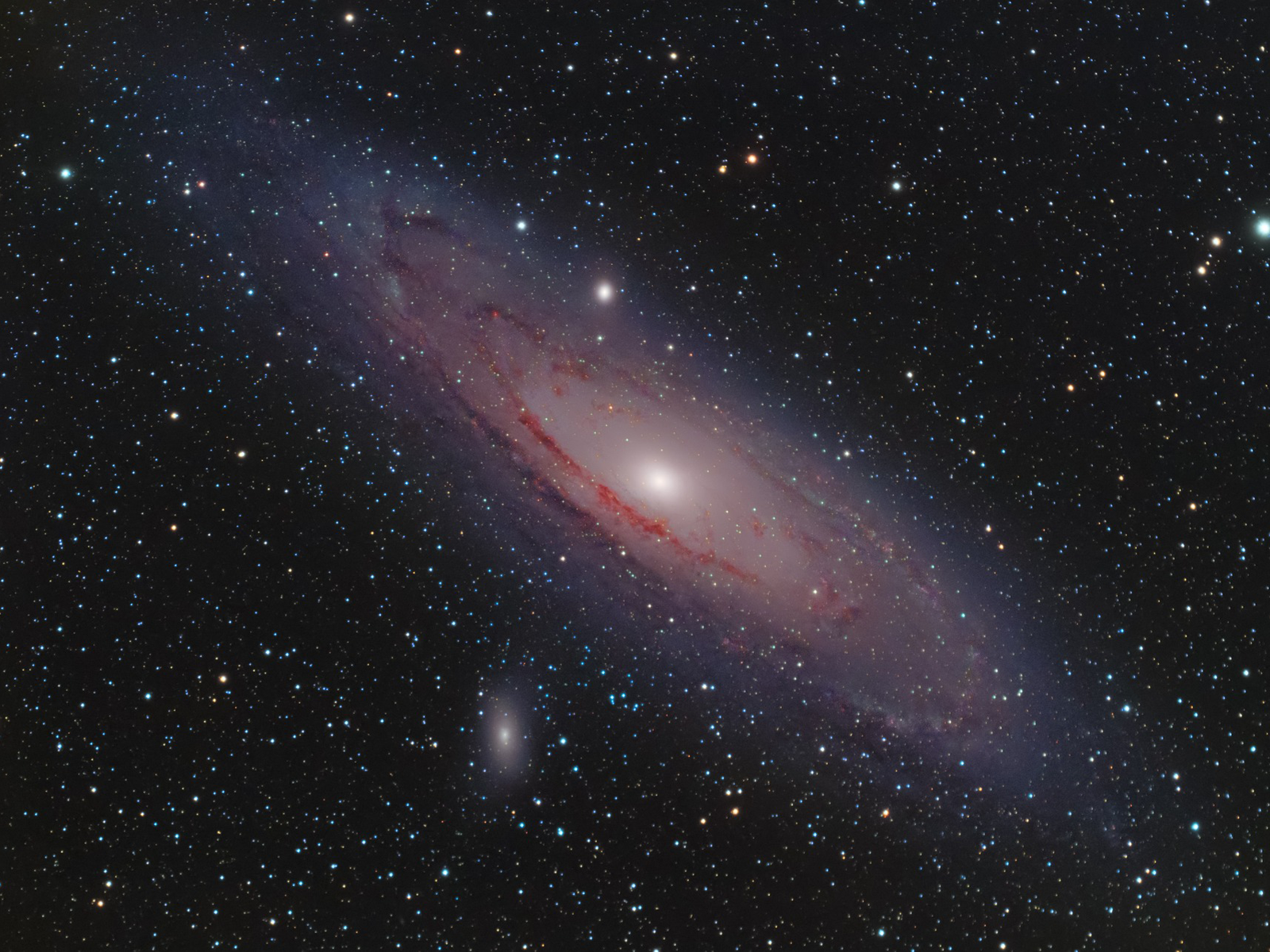
Moving outwards, we come to the galaxies, and here, of course, aperture is king. In a small or mid-sized scope (smaller than 12 inches, or 300mm), the limit is about 200 million light-years. For example, you’d be able to go as far as 190 million light-years with NGC 1961, a magnitude 11 galaxy in Camelopardalis.
Step up to a large scope (around 12 inches, or 300mm), and you could double the distance with NGC 6166, a magnitude 13 galaxy found in Hercules. Located an impressive 450 million light-years away, you’re looking at the galaxy as it was during the first mass extinction on Earth, when half of all life was wiped out.
Can you see further? Theoretically, yes! According to Philip Harrington, it’s possible to spot a quasar - the bright, active core of an early galaxy. However, the target in question, 3C 273 in Virgo, is a faint magnitude 12.8, which could push the capabilities of a small scope.
It’s certainly been imaged with smart telescopes, such as the ZWO Seestar S50, and it should certainly be detectable with mid or large scopes. However, don’t have high expectations; your scope is not the Hubble or the James Webb Space Telescope. You won’t see anything more than a starlike point, but you’ll have the satisfaction of knowing you’re seeing an object a staggering 2 billion light-years away!
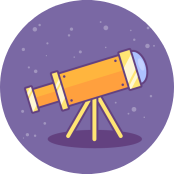
Learn More
Interested in learning more about astronomy, astrophotography, telescopes, and more? Check out our AstronomyHub!






